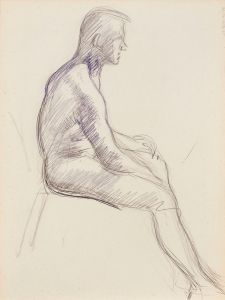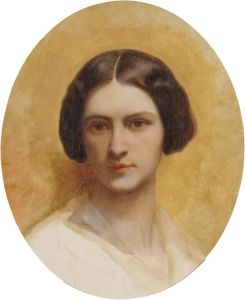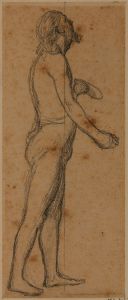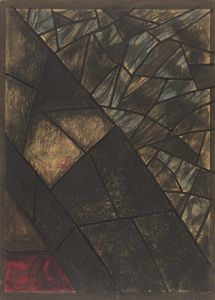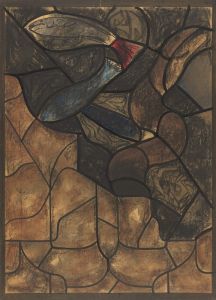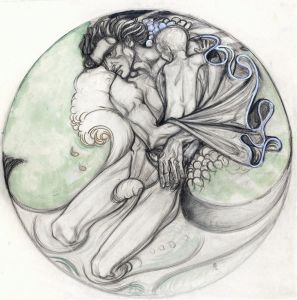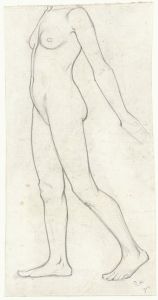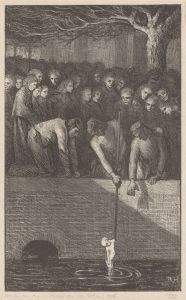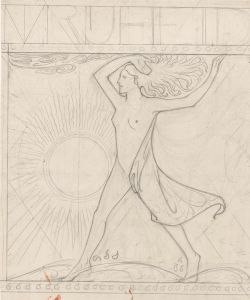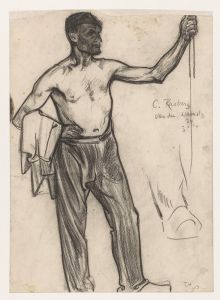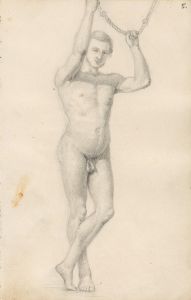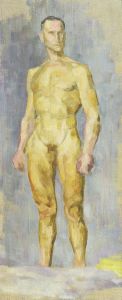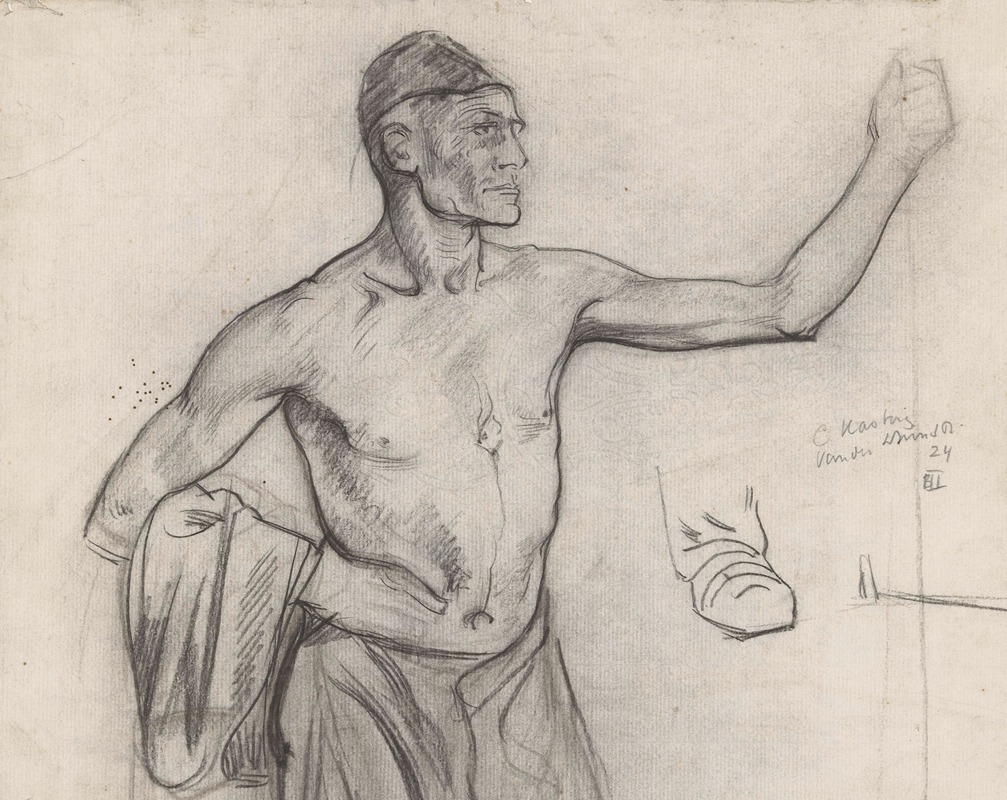
Staande man met ontbloot bovenlichaam, ten halven lijve
A hand-painted replica of Richard Nicolaüs Roland Holst’s masterpiece Staande man met ontbloot bovenlichaam, ten halven lijve, meticulously crafted by professional artists to capture the true essence of the original. Each piece is created with museum-quality canvas and rare mineral pigments, carefully painted by experienced artists with delicate brushstrokes and rich, layered colors to perfectly recreate the texture of the original artwork. Unlike machine-printed reproductions, this hand-painted version brings the painting to life, infused with the artist’s emotions and skill in every stroke. Whether for personal collection or home decoration, it instantly elevates the artistic atmosphere of any space.
Richard Nicolaüs Roland Holst was a prominent Dutch artist known for his contributions to the Symbolist movement in the late 19th and early 20th centuries. Born on December 4, 1868, in Amsterdam, Holst was part of a family with strong artistic and literary connections. He studied at the Rijksakademie van Beeldende Kunsten in Amsterdam, where he was influenced by the prevailing artistic trends of his time.
One of Holst's works, "Staande man met ontbloot bovenlichaam, ten halven lijve," which translates to "Standing Man with Bare Upper Body, Half-Length," exemplifies his skill in capturing the human form and his interest in exploring the human condition through art. This piece, like many of Holst's works, reflects his Symbolist leanings, characterized by an emphasis on conveying deeper meanings and emotions rather than focusing solely on realistic representation.
Holst's artistic style was marked by a blend of realism and symbolism, often incorporating elements that suggested a narrative or conveyed a philosophical idea. His works frequently featured human figures, which he used as a vehicle to explore themes of spirituality, morality, and the human experience. The depiction of the human body in "Staande man met ontbloot bovenlichaam, ten halven lijve" is likely to be both a study of form and an exploration of the symbolic potential of the human figure.
Throughout his career, Holst was not only a painter but also an influential teacher and writer. He held a professorship at the Rijksakademie, where he mentored a generation of Dutch artists. His teachings emphasized the importance of personal expression and the exploration of deeper meanings in art, principles that are evident in his own work.
Holst was also deeply involved in the social and political issues of his time. He was an advocate for social reform and believed in the power of art to inspire change. This belief often informed his artistic choices, as he sought to create works that were not only aesthetically pleasing but also thought-provoking and socially relevant.
In addition to his paintings, Holst was known for his work in other mediums, including murals, stained glass, and book illustrations. His versatility as an artist allowed him to leave a significant mark on various aspects of Dutch art and culture.
Richard Nicolaüs Roland Holst passed away on December 31, 1938, leaving behind a legacy of artistic innovation and social engagement. His work continues to be studied and appreciated for its unique blend of realism and symbolism, as well as its reflection of the social and cultural currents of his time. "Staande man met ontbloot bovenlichaam, ten halven lijve" remains a testament to his skill as an artist and his commitment to exploring the complexities of the human experience through art.





